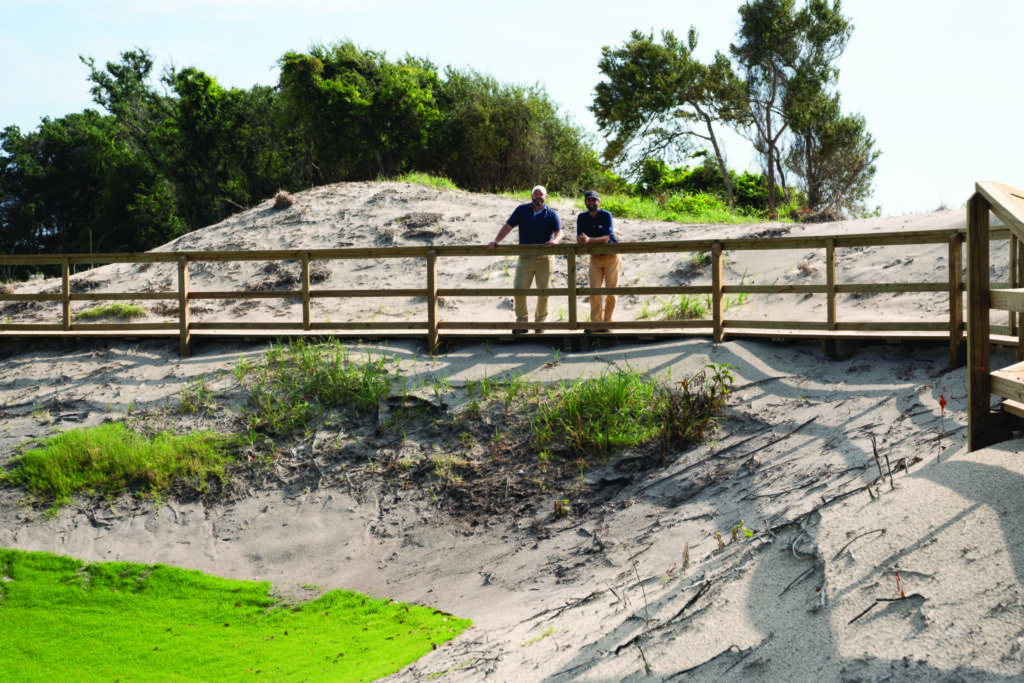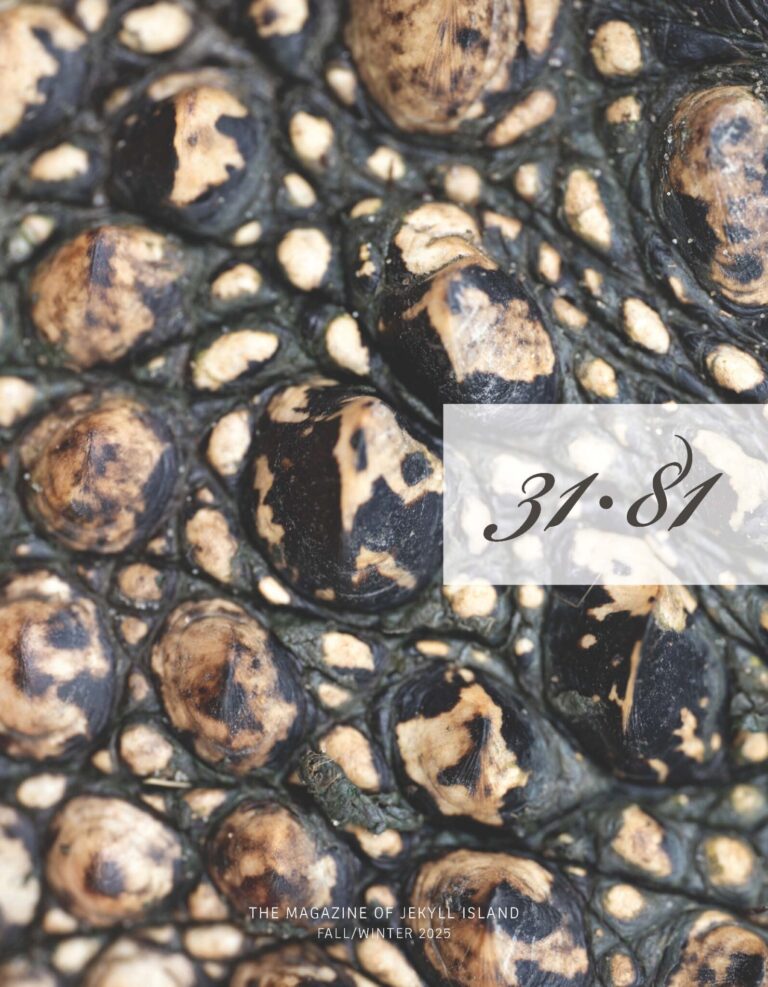Golf architects Jeffrey Stein and Brian Ross have an old-school approach for a new game
By Betsy Riley
Golf architects Jeffrey Stein and Brian Ross were collaborating on a project in Pennsylvania when they won their bid to reinvent and expand Jekyll Island’s Great Dunes Golf Course, originally conceived in the 1920s by champion golfer and legendary designer Walter J. Travis. The two knew from the start that this course, which opens Fall 2025, presented a unique opportunity.

“For a municipal golf course to have ocean views, dunes, giant live oaks, pine forest, and coastal estuary is really special,” says Ross. Most courses with such dramatic scenery, including many of Travis’s own,
are private.
“When Great Dunes opened, it was not like any other course in the U.S.,” says Stein. “It was a true links golf course in the American South. That is rare.”
Both Stein and Ross are drawn to historic courses. Given Jekyll’s longtime affluent benefactors, it’s not surprising that the island enjoys a lengthy association with the game. Its first course, designed by Willie Dunn, opened in 1898. Legendary designer Donald Ross created a second course in 1910. To map out Great Dunes, Stein and Ross (no relation) tapped local archives for vintage photographs, aerial shots, and even postcards documenting the original layout. For example, historic images inspired them to make the new #13 green a duplicate of the original one on #14, a hole long ago washed away by the ocean.
Unfortunately, the island’s remarkable topography was also the downfall of those early courses. Drainage was so challenging that, legend has it, Club members consulted an engineer from the Panama Canal. The entire back nine of Travis’s original course was eventually lost to the tides. As a result, its new 18-hole incarnation incorporates land from 9 holes of the former 1964 Oleander Course, which donated its remaining 100 acres to wildlife habitat for conservation purposes.
Stein and Ross believe the new Great Dunes course proves golf can be beneficial for the environment. Asphalt cart paths have been replaced with crushed aggregate that blends with the sand. The entire course has paspalum grass, irrigated with brackish water to ease the burden on the island’s freshwater aquifer. Runoff doesn’t just drain, it is pumped out with the tides twice daily. “It’s not enough just to get water underground,” says Ross. “You have to actively push the water out.”
“We worked closely with the Jekyll Island Authority’s conservation department to promote native vegetation,” adds Stein. “We stripped away all the Bermuda grass that had been allowed to roam free for the last 80 years.” The new routing does not bring golfers back to the clubhouse at the turn, keeping them immersed in natural beauty. Layouts have also been designed to protect and even enhance wildlife habitats, carving out hammocks for nesting birds and deeper, cooler ponds for fish.
Stein stresses the new vibe is “very much a throwback course,” which blurs the lines between greens, fairway, and out-of-bounds territory. Golfers must navigate deep bunkers and undulating, “diabolical” greens, though these are larger to help reduce wear and tear from foot traffic and maintenance.
The new course presents plenty of challenging shots over mounds and swales—try aiming between 50-foot dunes on the approach to #4. But the designers insist the course welcomes all skill levels. Careful attention has been given to tee placement to honor this, with play ranging from 6,900 to 4,600 yards. After all, the course’s Golden Age originator titled his first book Practical Golf.
Essentially, Stein and Ross are preservationists—not just of historic golf holes, but of the land itself. “I believe the true art in the reimagination of these golden age tracks is the exercise of restraint,” says Stein, quoting Perry Maxwell, another prominent designer of the era: “Nature must precede the architect, in laying out of links … The site of a golf course should be there, not brought there … Leave the earth where you find it, and the tee where it lies.”


